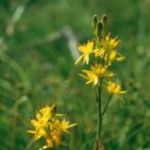| Common Name: |
Akebia |
| Botanical Name: |
Akebia trifoliata syn. A. lobata (akebia) |
| Genus: |
Akebia |
| Family: |
Lardizabalaceae |
| Native Location: |
China, Japan, Korea |
| Cultivation: |
Well-drained soil in sun. Even where hardy, new leaves and flowers may be damaged by severe frost. |
| Propagation: |
By seed sown in spring or autumn; by semi-ripe cuttings in summer; by layering in winter. They dislike disturbance. |
| Harvest: |
Stems are cut in autumn and are dried for use in decoctions and powders. Young leaves are picked in spring and are dried. Fruits are harvested when ripe and are used fresh. |
| Height: |
10m (30ft) |
| Hardiness: |
Z5-8 |
| Parts Used: |
Stems (mu tong), leaves, fruits |
| Properties: |
A pungent, bitter herb that controls bacterial and fungal infections, stimulates the circulatory and urinary systems and female organs, and is a potent diuretic due to the high content of potassium salts. |
| Medicinal Uses: |
Internally for urinary tract infections, rheumatoid arthritis, absence of menstruation, and insufficient lactation. A stew of mu tong and pork knuckles is a traditional Chinese method of promoting lactation. |
| Culinary Uses: |
Dried leaves are used for tea. Fruit pulp is eaten fresh. |
| Bibliography: |
Encylopedia of Herbs by Deni Brown Copyright ©: 1995, 2001 Dorling Kindersley Limited pp 109
|

